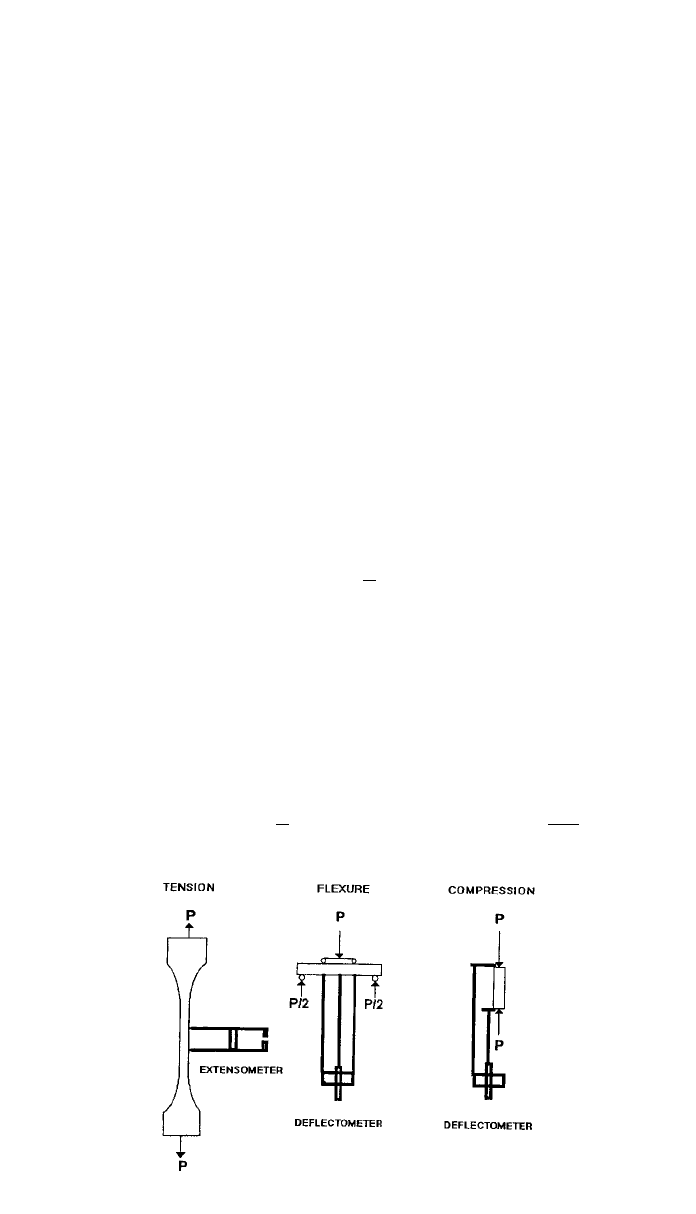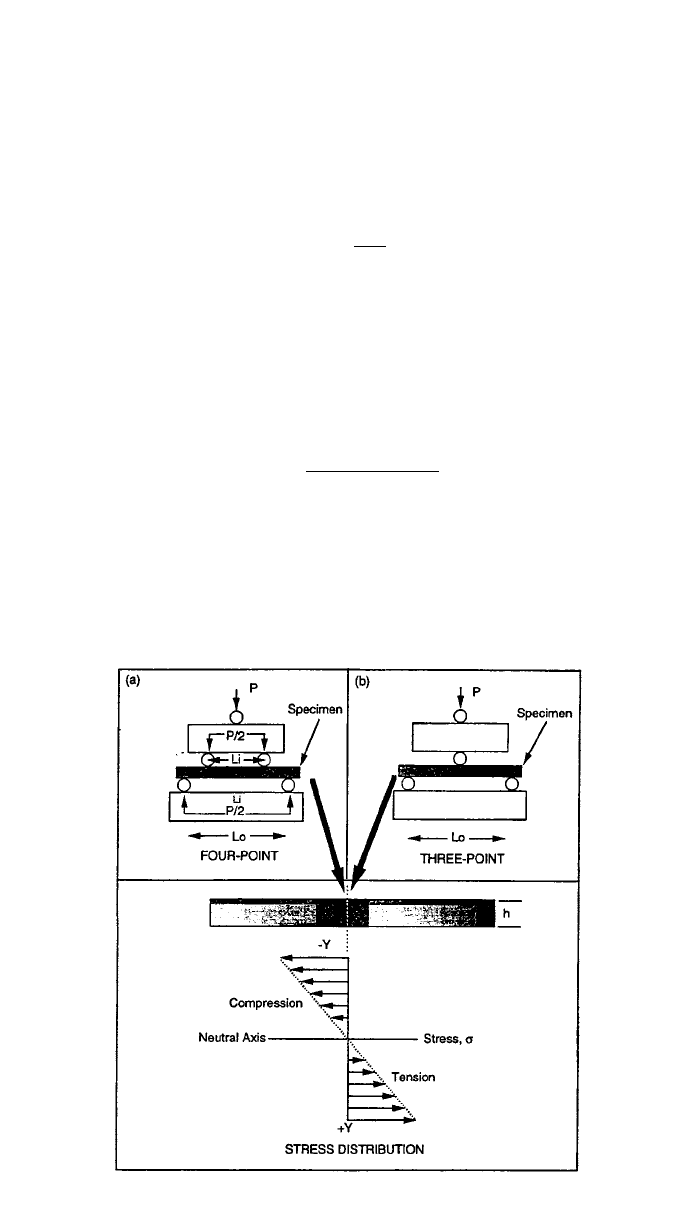Kutz M. Handbook of materials selection
Подождите немного. Документ загружается.


618 PROFESSIONAL AND TESTING ORGANIZATIONS
cational, and government institutions. NFPA conducts fire safety education
programs for the general public and provides information on fire protection and
prevention. Also provided by the association is the field service by specialists
on flammable liquids, electricity, gases, and marine problems.
Each year, statistics on causes and occupancies of fires and deaths resulting
from fire are compiled and published. NFPA sponsors seminars on the Life
Safety Codes, National Electrical Code, industrial fire protection, hazardous ma-
terials, transportation emergencies, and other related topics. NFPA also conducts
research programs on delivery systems for public fire protection, arson, residen-
tial fire sprinkler systems, and other subjects. NFPA publications include Na-
tional Fire Codes Annual, Fire Protection Handbook, Fire Journal, and Fire
Technology.
7 NATIONAL SANITATION FOUNDATION (NSF)
The National Sanitation Foundation, more commonly known as NSF, is an in-
dependent, nonprofit environmental organization of scientists, engineers, tech-
nicians, educators, and analysts. NSF frequently serves as a trusted neutral
agency for government, industry, and consumers, helping them to resolve dif-
ferences and unite in achieving solutions to problems of the environment.
At NSF, a great deal of work is done on the development and implementation
of NSF standards and criteria for health-related equipment. Standard No. 1,
concerning soda fountain and luncheonette equipment, was adopted in 1952.
Since then, many new standards have been developed and successfully imple-
mented. The majority of NSF standards relate to water treatment and purification
equipment, products for swimming pool applications, plastic pipe for potable
water as well as drain, waste, and vent (DWV) uses, plumbing components for
mobile homes and recreational vehicles, laboratory furniture, hospital cabinets,
polyethylene refuse bags and containers, aerobic waste treatment plants, and
other products related to environmental quality.
Manufacturers of equipment, materials, and products that conform to NSF
standards are included in official listings, and these producers are authorized to
place the NSF seal on their products. Representatives from NSF regularly visit
the plants of manufacturers to make certain that products bearing the NSF seal
do indeed fulfill applicable NSF standards.
8 SOCIETY OF PLASTICS ENGINEERS (SPE)
The Society of Plastics Engineers was founded in 1942 with the objective of
promoting scientific and engineering knowledge relating to plastics. SPE is a
professional society of plastics scientists, engineers, educators, students, and
others interested in the design, development, production, and utilization of plas-
tics materials, products, and equipment. SPE currently has over 37,000 members
scattered among its 91 sections. The individual sections as well as the SPE main
body arranges and conducts monthly meetings, conferences, educational semi-
nars, and plant tours throughout the year. SPE also publishes Plastics Engineer-
ing, Polymer Engineering and Science, Plastics Composites, and the Journal of
Vinyl Technology. The society presents a number of awards each year encom-
passing all levels of the organization, section, division, committee, and inter-
national. SPE divisions of interest are color and appearance, injection molding,

10 UNDERWRITERS LABORATORIES (UL) 619
extrusion, electrical and electronics, thermoforming, engineering properties and
structure, vinyl plastics, blow molding, medical plastics, plastics in building,
decorating, mold making, and mold design.
9 SOCIETY OF PLASTICS INDUSTRY (SPI)
The Society of Plastics Industry is a major society, whose membership consists
of manufacturers and processors of plastics materials and equipment. The society
has four major operating units consisting of the Eastern Section, the Midwest
Section, the New England Section, and the Western Section. SPI’s Public Affairs
Committee concentrates on coordinating and managing the response of the
plastics industry to issues such as toxicology, combustibility, solid waste, and
energy. The Plastic Pipe Institute is one of the most active divisions, promoting
the proper use of plastic pipes by establishing standards, test procedures, and
specifications. Epoxy Resin Formulators Division has published over 30 test
procedures and technical specifications. Risk management, safety standards, pro-
ductivity, and quality are a few of the major programs undertaken by the
machinery division. SPI’s other divisions include Expanded Polystyrene Divi-
sion, Fluoropolymers Division, Furniture Division, International Division, Plastic
Bottle Institute, Machinery Division, Molders Division, Mold Makers Division,
Plastic Beverage Container Division, Plastic Packaging Strategy Group, Poly-
meric Materials Producers Division, Polyurethane Division, Reinforced Plastic/
Composites Institute, Structural Foam Division, Vinyl Siding Institute, and Vinyl
Formulators Division.
The National Plastics Exposition and Conference, held every 3 years by the
Society of Plastic Industry, is one of the largest plastic shows in the world. SPI
works very closely with other organizations such as ASTM and ANSI to develop
new test methods, standards, and specifications.
10 UNDERWRITERS LABORATORIES (UL)
Underwriters Laboratories, founded in 1894, is chartered as a not-for-profit or-
ganization to establish, maintain, and operate laboratories for the investigation
of materials, devices, products, equipment, constructions, methods, and systems
with respect to hazards affecting life and property.
There are five testing facilities in the United States and over 200 inspection
centers. More than 700 engineers and 500 inspectors conduct tests and follow-
up investigations to ensure that potential hazards are evaluated and proper safe-
guards provided. UL has six basic services it offers to manufacturers, inspection
authorities, or government officials. These are product listing service, classifi-
cation service, component recognition service, certificate service, inspection ser-
vice, and fact finding and research.
UL’s Engineering Services Department is in charge of evaluating individual
plastics and other products using plastics as components. Engineering Services
evaluates consumer products such as TV sets, power tools, appliances, and in-
dustrial and commercial electrical equipment and components. For a plastic ma-
terial to be recognized by UL, it must pass a variety of UL tests including the
UL 94 flammability test and the UL 746 series, short- and long-term property
evaluation tests. When a plastic material is granted recognized component status,
a yellow card is issued. The card contains precise identification of the material

620 PROFESSIONAL AND TESTING ORGANIZATIONS
Table 1 Typical Costs for Testing Services
Type of Tests
a
Cost per Test
Analytical: FT-IR, DSC, TGA, TMA, GPC, Additives identification,
filler content, carbon content, moisture content, chromatography,
spectrometry, NMR
$100–$500
Mechanical / Physical: Tensile, flexural, compressive, shear,
puncture, tear, Poisson’s ratio, creep, impact testing, hardness,
abrasion, specific gravity, chemical compatibility, density
$100–$400
Electrical: Dielectric constant, dissipation factor, volume resistivity,
surface resistivity, dielectric strength, EMI / RFI shielding
effectiveness, arc resistance
$100–$400
Thermal / Flammability: Coefficient of thermal expansion, thermal
conductivity, TMA, DSC, heat deflection temperature, melting
point determination, flammability tests, oxygen index, TGA
$100–$500
Rheological: Capillary rheometer tests, viscosity tests, melt flow
index, intrinsic viscosity, brookfield viscosity, die swell
measurements
$100–$300
Optical: Colorimeter, spectrophotometer, color measurement, UV
tests, light absorption and transmission, refractive index,
yellowness index, gloss
$100–$300
Source: Plastics Technology Laboratories, Inc. Pittsfield, MA; www.ptli.com.
a
FTIR, Fourier Transform Infrared Spectrometry
DSC, Differential Scanning Calorimetry
TGA, Thermogravimetric Analysis
TMA, Thermomechanical Analysis
GPC, Gel Permeation Chromatography
NMR, Nuclear Magnetic Resonance
including supplier, product designation, color, and its UL 94 flammability clas-
sification at one or more thicknesses. Also included are many of the property
values such as relative temperature index, hot wire ignition, high-current arc
ignition, and arc resistance. These data also appear in the Plastics Recognized
Component Directory.
UL publishes the names of the companies who have demonstrated the ability
to provide a product conforming to the established requirements, upon successful
completion of the investigation and after agreement of the terms and conditions
of the listing and follow-up service. Listing signifies that production samples of
the product have been found to comply with the requirements, and that the
manufacturer is authorized to use the UL Listing Mark on the listed products
that comply with the requirements.
UL’s consumer advisory council was formed to advise UL in establishing
levels of safety for consumer products, to provide UL with additional user field
experience and failure information in the field of product safety, and to aid in
educating the general public in the limitations and safe use of specific consumer
products.
11 TYPICAL COSTS FOR TESTING SERVICES
Due to the complexity of the tests, varying requirements and other circum-
stances, it is very difficult to estimate the cost for a particular analytical test.
However, an attempt is made to give reader a general idea of the typical costs
for testing services in Table 1.

12 INDEPENDENT TESTING LABORATORIES 621
12 INDEPENDENT TESTING LABORATORIES
Atlas Weathering Services Group
17301 Okeechobee Road
Miami, Florida 33015
(800) 255-3738
Battelle Memorial Institute
505 King Avenue
Columbus, Ohio 43201
(614) 424-6533
Broutman, L.J., Associates Ltd.
3424 South State St.
Chicago, Illinois 60616
(312) 842-4100
Chemir/Polytech Laboratories, Inc.
2672 Metro Boulevard
St. Louis, Missouri 63043
(314) 291-6620
CRT Labs Inc., (Calif. Resin Testing)
2812 Walnut, Suite A
Tustin, California 92680
(800) 597-5227
Delsen Testing Laboratories, Inc.
1024 Grand Central Avenue
Glendale, California 91201
(213) 245-8517
Detroit Testing Laboratory, Inc.
7111 E. Eleven Mile Road
Warren, Michigan 48092-2709
(810) 754-9000
Dynepco Inc.
84 N. Main Street
Wharton, New Jersey 07885
(201) 361-8900
Engineered Polymers
P.O. Box 360, 42 Sears Way, West
Springfield, Massachusetts 01090
(413) 787-0780
Gaynes Testing Laboratories, Ltd.
1642 W. Fulton Street
Chicago, Illinois 60612
(312) 421-5257
Ghesquire Plastic Testing, Inc.
20450 Harper Avenue
Harper Woods, Michigan 48225
(313) 885-3535
Hunter Associates Laboratory, Inc.
11491 Sunset Hills Road
Reston, Virginia 22090
(703) 471-6870
Integrated Design, Inc.
10 River Road, Suite 101
Uxbridge, Massachusetts 01569-2245
(800) 399-8457
Measurement Technology Corp.
(Measure Tech)
4396 Round Lake Road West
St. Paul, Minnesota 55112-3923
(612) 633-7651
Measurement Technology Inc.
4240 Lock Highland Parkway
Roswell, Georgia 30075
(770) 587-2222
Monarch Analytical Laboratories, Inc.
349 Tomahawk Drive
Maumee, Ohio 43537
(419) 897-9000
Plastics Technology Laboratories, Inc.
50 Pearl Street
Pittsfield, Massachusetts 01201
(413) 499-0983
Polyhedron Laboratories, Inc.
10626 Kinghurst Street
Houston, Texas 77099
(713) 879-8600

622 PROFESSIONAL AND TESTING ORGANIZATIONS
Polymer Solutions Inc.
1872 Pratt Drive
Blacksburg, Virginia 24060-6363
(540) 231-3058
Q-Panel Lab Products
26200 First Street
Cleveland, Ohio 44145
(216) 835-8700
Rutherford Research Corp.
P.O. Box 249
Rutherford, New Jersey 07070
(201) 933-2091
Scientific Process and Research, Inc.
67 Veronica Avenue
Somerset, New Jersey 08873
(908) 846-3477
SGS U.S. Testing Co., Inc.
291 Fairfield Avenue
Fairfield, New Jersey 07004
(800) 777-8378
Skeist Inc.
375 Route 10
Whippany, New Jersey 07891
(201) 512-2020
Specialty Testing and Equipment, Inc.
42 Dutch Mill Road
Ithaca, New York 14850
(607) 257-1532
Springborn Laboratories, Inc.
10 Springborne Center
Enfield, Connecticut 06082
(860) 749-8371
Underwriters Laboratories
333 Pfingsten Road
Northbrook, Illinois 60062
(847) 272-8800
University of Massachusetts Lowell,
Inst. Plastics Innov.
333 Aiken Street
Lowell, Massachusetts 01854-2881
(508) 934-3445
VTEC Laboratories, Inc.
212 Manida Street
Bronx, New York 10474
(718) 542-8248
X-Rite, Inc.
3100 44
th
Street
S.W. Grandville, Michigan 49418
(800) 545-0694

623
CHAPTER 23
CERAMICS TESTING
Shawn K. McGuire
Stanford University
Stanford, California
Michael G. Jenkins
University of Washington
Seattle, Washington
1 INTRODUCTION 623
2 MECHANICAL TESTING 624
2.1 Strength 624
2.2 Creep 628
2.3 Hardness 630
2.4 Fracture Toughness 632
2.5 High Strain Rate 633
2.6 Fatigue 634
3 THERMAL TESTING 637
3.1 Thermal Expansion 637
3.2 Thermal Conductivity 640
3.3 Heat Capacity 643
4 NONDESTRUCTIVE
EVALUATION TESTING 644
4.1 Ultrasonography 644
4.2 Radiography 646
5 ELECTRICAL TESTING 646
5.1 Electrical Resistance at Elevated
Temperatures 647
5.2 Flexural Strength of
Electronic-Grade Ceramics 647
6 SUMMARY 647
REFERENCES 648
1 INTRODUCTION
Ceramics are being used in an ever-increasing capacity in numerous industrial
and scientific applications. Advanced ceramics, in particular, have great future
possibilities for use in a wide variety of applications where their unique com-
bination of properties can achieve better results than other materials such as
metals and polymers. Advanced ceramics are typically wear and corrosion re-
sistant, lightweight, and thermodynamically stable. In addition, many advanced
ceramics have electrical properties that make them advantageous for use in elec-
tronic applications such as electronic packaging. Ceramics are finding increasing
use in such areas as biomaterials, electronics, MEMS (microelectromechanical
systems), and heat transfer applications such as gas turbines in the aerospace
industry. The market value of advanced ceramics in the United States is esti-
mated to increase to $11 billion by the year 2003 from a value of $7.5 billion
in 1998.
1
Similarly, the world demand for advanced ceramics has increased from
an estimated $16.7 billion in 1994 to $25.3 billion in the year 2000.
2
HandbookofMaterialsSelection.EditedbyMyerKutz
Copyright Ó 2002 John Wiley & Sons, Inc., NewYork.

624 CERAMICS TESTING
With the steadily increasing use of ceramics in industry, there exists an in-
creasing demand to characterize and quantify the properties of ceramics. This
leads to higher demand for improved testing techniques to yield more exact data
used for endeavors such as design, safety analysis, quality control, and scientific
understanding. In particular, the brittle nature of ceramics makes their fracture
characteristics especially important for the engineer that needs to design ceramic
components with life-cycle and safety considerations. In addition to the predom-
inant mechanical testing being performed, there is demand for improved testing
of thermal, electrical, and environmental properties as well as others.
Of equal importance to the driving forces behind ceramic testing is the value
of the data being obtained from these tests. Do the potential benefits of the data
outweigh the cost of performing the tests? What are the predictive abilities of
the quantified test results?
To aid the engineer or scientist who is starting his or her research into po-
tential ceramic test methods, this chapter gives a brief overview of the major
test methods currently being employed, relative advantages and disadvantages
to each other, and some common sources of error. In addition, a listing of stan-
dards that are both relevant and directly applicable to ceramics is given for
various testing methods. These standards can be further investigated by the
reader who wants a more in-depth look into the exact setup and requirements
of a given test. Standardization is an important process in the evolution of ce-
ramic testing to improve accuracy and precision of measured results. New stan-
dards are continuously being developed and while not all the standards listed
for each test are specifically targeted for ceramics, they still have relevance in
terms of improving the exactness of the test setup and results.
2 MECHANICAL TESTING
With the increasing role of ceramics in technology, further understanding of
mechanical properties has become increasingly more important. This has resulted
in the use and standardization of various test methods to better understand and
quantify mechanical properties. Test methods reveal such properties as strength,
fatigue, fracture resistance, creep, and slow crack growth, which contribute to
design, scientific understanding, and estimations of service life among others.
2.1 Strength
One of the most important properties for characterizing a material is strength.
Strength (yield, ultimate, etc.) is often used as a measure of success in materials
development.
3
The characterization of the fracture strength (approximately equal
to ultimate strength for brittle materials) distribution is needed when ceramic
design for structural applications involves failure probability as a criteria.
4
Var-
ious test methods are employed to determine the fracture strength of a given
ceramic material. Usually, the fracture strength is equated to the maximum stress
at the point of fracture, which requires that the stress distribution in the test
specimen be known. A common source of error in tests measuring fracture
strength is that the strength of ceramic materials is strongly influenced by the
test specimen’s size, geometry, and surface finish. The more common methods
for measuring fracture strength include uniform uniaxial stress loading, nonun-
iform uniaxial stress loading, and biaxial stress loading.

2 MECHANICAL TESTING 625
Fig. 1 Schematic of tensile, flexure, and compressive setups. (From Ref. 3 by
courtesy of Marcel Dekker Inc.)
Uniform uniaxial stress load testing is performed by putting a given test
specimen into a state of tension or compression (Fig. 1). Testing in a uniform,
uniaxial stress field controls the stress-state variable that allows determination
of the mechanical behavior at given loads. Tension and compression tests are
not as common as the nonuniform flexure test because the brittle nature of many
ceramics results in the need for specialized testing equipment, extensive prepa-
ration of test specimen, and an adequately uniform stress state, which can be
difficult to achieve.
3
Tension
The tensile test equipment consists of two main parts, the test specimen grip
holding the actual test specimen and the interface attachment that connects the
test specimen grip to the test machine. The grip should be designed to reduce
any eccentricity in order to maintain a uniaxial stress state. Ceramics, in partic-
ular, are not able to use a threaded head as an interface because of the difficult
nature of machining such a brittle material. The tapered head test specimen is
also difficult to machine to proper tolerances. The button head test specimen has
emerged as the most reliable interface method.
3
The attachment interfacing be-
tween the test specimen grip and the test machine is usually one of two designs:
flexible, self-aligning and fixed, alignable.
3
Ideally, the stress state will be characterized by the simple equation:
P
⫽
A
where
is the normal stress, P is the applied force, and A is the cross sectional
area. However, the actual stress state in the gauge section,
gs
, will include error
from eccentricity in the testing equipment and/or the test specimen and can be
characterized as:
⫽
⫹
gs ab
where
PPer
axial stress,
⫽ and bending stress,
⫽
ab
AI

626 CERAMICS TESTING
with e being the eccentricity distance, r being the distance from the point in the
gauge section at which the stress is being measured to the centroid, and I being
the moment of inertia in the gauge section cross section.
Some of the tensile testing standards that apply directly to ceramics are:
Japanese Industrial Standards Committee (JISC),* ‘‘Testing Methods for Ten-
sile Strength of Monolithic Advanced Ceramics at Room and Elevated
Temperature,’’ JIS R1606-1995
American Society for Testing and Materials (ASTM),† ‘‘Standard Test
Method for Tensile Strenth of Monolithic Advanced Ceramics at Ambient
Temperatures,’’ C1273-95
ASTM, ‘‘Standard Test Method for Tensile Strength of Monolithic Advanced
Ceramics at Elevated Temperatures,’’ C1366-97
The following standards are directly applicable to metals but can have applica-
bility to ceramics:
ASTM, ‘‘Standard Test Methods for Tension Testing of Metallic Materials,’’
E8-96a
ASTM, ‘‘Standard Test Methods for Elevated Temperature Tension Testing
of Metallic Materials,’’ E21-92
ASTM,’’ Standard Practice for Verification of Specimen Alignment under
Tensile Loading,’’ E1012-93A
Compression
The compression strength of ceramic materials is usually much greater than that
in tension. Consequently, tensile strength is usually the critical factor in terms
of design. The compression test usually consists of two load blocks exerting a
compressive force on a cylindrical test specimen. The test specimen should be
uniform to avoid buckling of individual layers aligned with the applied load.
Common sources of error are size mismatches between the load block and
specimen, surface irregularities, and eccentric loading as explained in the tensile
testing section.
3
The first three errors bring about excessive stresses in the ends
of the test specimen, which can cause failures in the nongauge section of the
test specimen. Eccentricity, as in tensile testing, reduces uniformity in the gauge
section stress state.
The following standards are directly applicable to compressive testing of ce-
ramics:
JISC, ‘‘Testing Method for Compressive Strength of High Performance
Ceramics,’’ R1608-1990
ASTM, ‘‘Standard Test Method for Compressive (Crushing) Strength of Fired
Whiteware Materials,’’ C773-88
* Japan Standards Association, Tokyo, Japan.
† ASTM International, West Conshohocken, Pennsylvania, USA.

2 MECHANICAL TESTING 627
Fig. 2 Three- and four-point flexure testing and resulting stress state. (From Ref. 3 by courtesy
of Marcel Dekker Inc.)
Flexure
Testing in flexure typically involves a three- or four-point loading of a test
specimen as shown in Fig. 2. Compared to tension and compression tests, flexure
tests are less expensive, simpler in setup, and easier to adapt to elevated tem-
perature testing.
3
The applied moment, M, yields the equation for uniaxial nor-
mal stress,
:
MC
⫽
I
where the moment of inertia I is (bh
3
)/12 (b ⫽ width and h ⫽ height) and C is
the distance from the neutral axis to the outer surface of the test specimen. Given
that the moment M
⫽ P(L
o
⫺ L
i
)/4 (L
o
⫽ outer span, L
i
⫽ inner span) and y ⫽
h/2 we can substitute into the equation to find the fracture strength, S
ƒ
, which
is the maximum tensile stress obtained at the fracture force, P
ƒ
:
1.5P (L
⫺ L )
ƒo i
S ⫽
ƒ
2
bh
Various sources of internal and external errors in the testing process can affect
the measured results of flexure tests. Errors classified as ‘‘internal’’ involve de-
viations from simple beam theory and involve test specimen geometry and prop-
erties.
5
A test specimen with an initial curvature resulting from residual stresses
